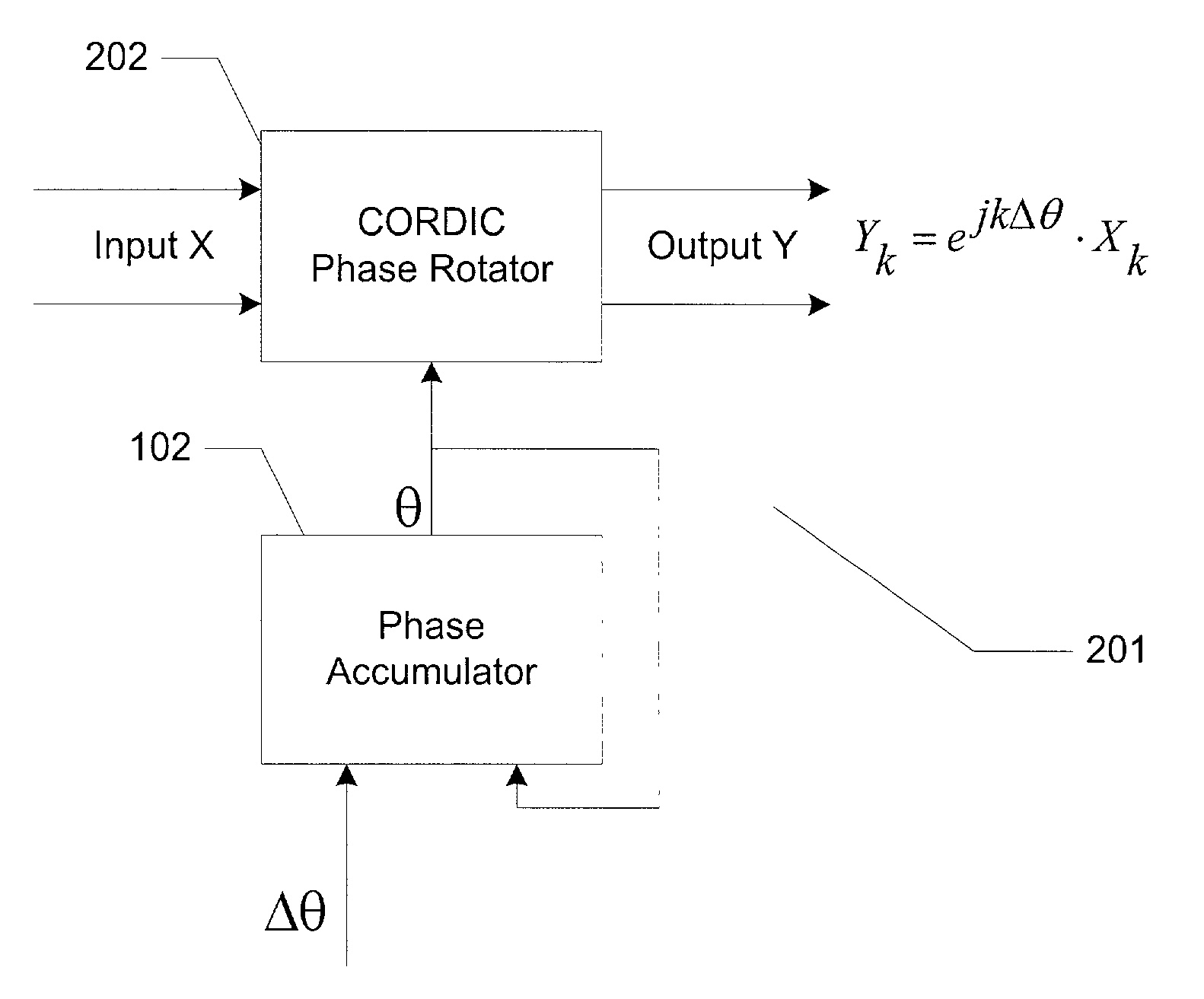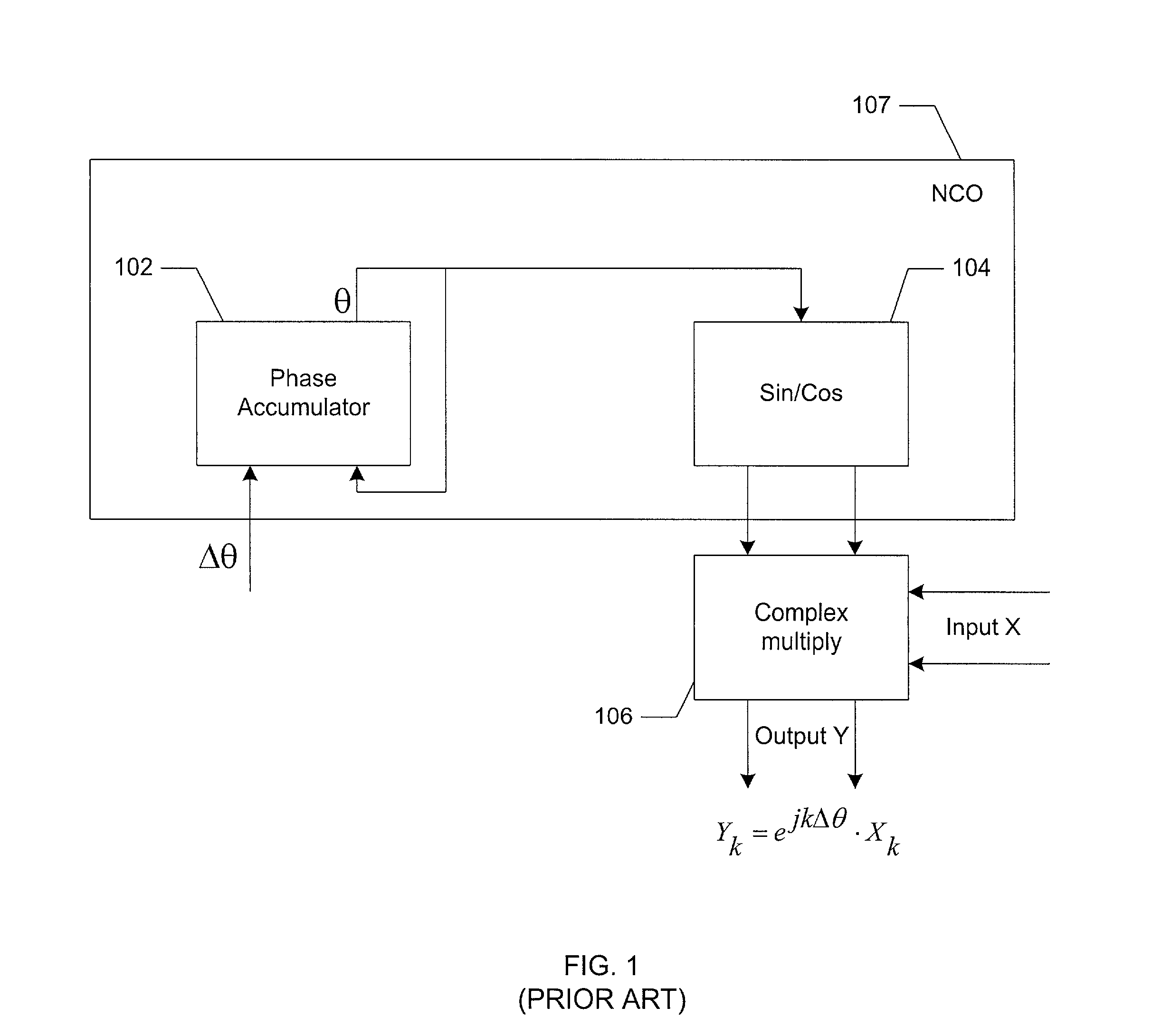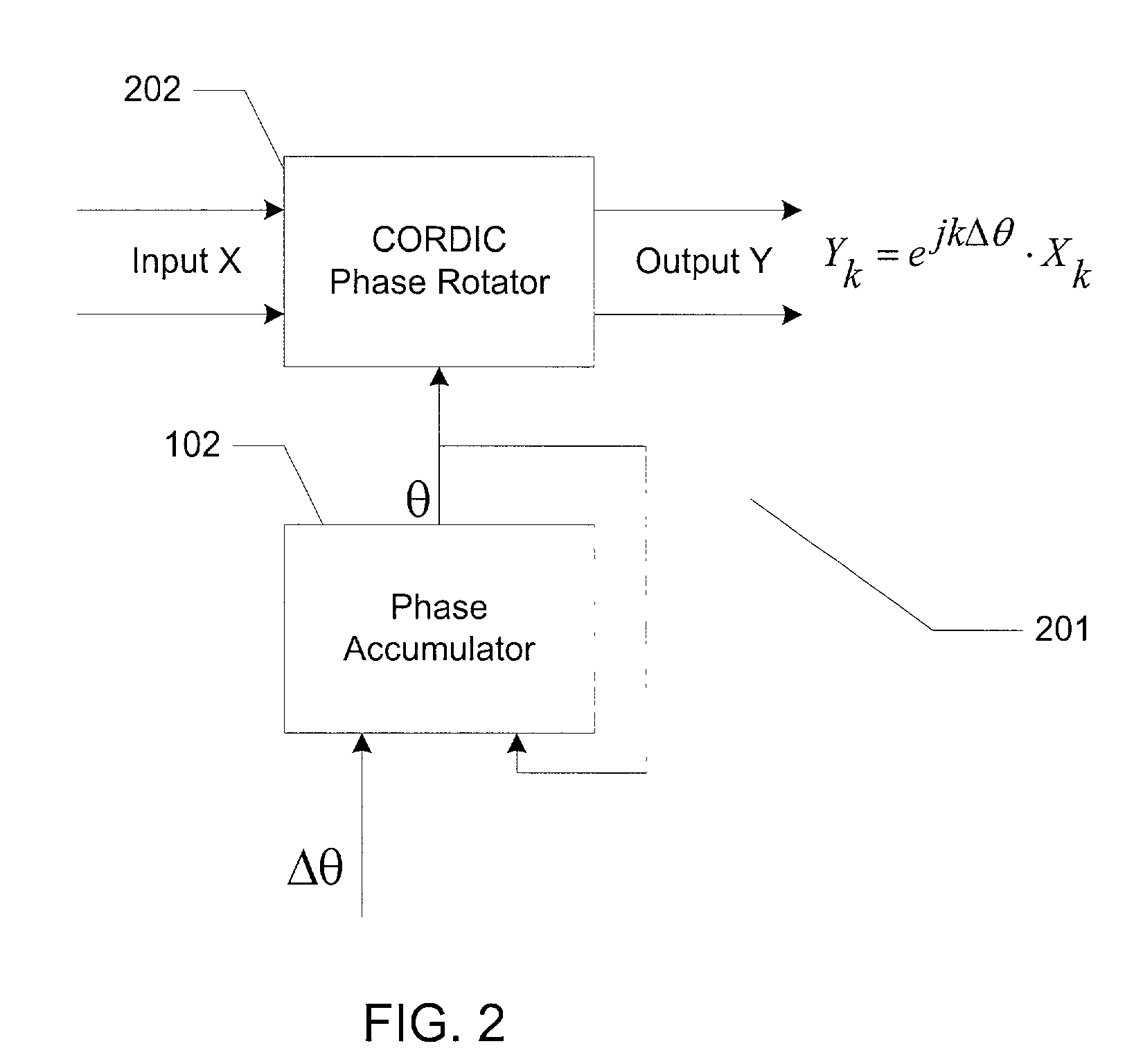Frequency translator using a cordic phase rotator
a cordic phase rotator and frequency translator technology, applied in the field of frequency translation, can solve the problem of removing a substantial portion of any remaining dither signal, and achieve the effect of being ready to implement in hardwar
- Summary
- Abstract
- Description
- Claims
- Application Information
AI Technical Summary
Benefits of technology
Problems solved by technology
Method used
Image
Examples
first embodiment
[0026]FIG. 2 is a schematic diagram of a frequency translator 201 according to the present invention. In FIG. 2 phase accumulator 102 outputs a phase angle to a CORDIC phase rotator 202. CORDIC phase rotator rotates an input X by a phase angle θ. The output Y can be expressed as Yk=ejkΔθ·Xk, which is equivalent to the output of conventional frequency translators. However, in frequency translator 201 of the present invention, sin / cos table 104 and complex multiplier 106 are replaced by CORDIC phase rotator 202.
[0027]The Coordinate Rotation Digital Computer (CORDIC) is a well-known algorithm, which was developed in the 1950s, and is described in Andraka, Ray, “A survey of CORDIC algorithms for FPGA based computers,” Proceedings of the 1998 ACM / SIGDA 6th International symposium on FPGAs, Feb. 22–24, 1998, Monterey, Calif, pp. 191–200. The advantage of CORDIC phase rotator 202 is that it uses discrete logic rather than multipliers and lookup tables as required for operation of NCOs. Thu...
second embodiment
[0032]FIG. 3 is a frequency translator according to the present invention using a 14-stage CORDIC phase rotator. An input vector X is to be rotated by a phase angle θ. The inphase (I) and quadrature (Q) components of input vector X are input to a CORDIC phase rotator 302. In the preferred embodiment, CORDIC phase rotator 302 comprises 14 stages, stage 1 through stage 14 . Stages 2 through 14 input the inphase and quadrature components of a vector rotated by the previous stage and output a vector rotated in according to the relation θk=tan−1(2−k) where k is the stage number and θk is the amount of rotation provided by that stage. If θk is negative, the angle is rotated in the negative direction for that stage. In addition, each of these stages outputs an adjusted phase angle. The phase angle is adjusted to account for the rotation provided by that stage. This can be either a positive or negative adjustment depending on the sign of the phase angle input to the stage. For example, if t...
PUM
 Login to View More
Login to View More Abstract
Description
Claims
Application Information
 Login to View More
Login to View More - R&D
- Intellectual Property
- Life Sciences
- Materials
- Tech Scout
- Unparalleled Data Quality
- Higher Quality Content
- 60% Fewer Hallucinations
Browse by: Latest US Patents, China's latest patents, Technical Efficacy Thesaurus, Application Domain, Technology Topic, Popular Technical Reports.
© 2025 PatSnap. All rights reserved.Legal|Privacy policy|Modern Slavery Act Transparency Statement|Sitemap|About US| Contact US: help@patsnap.com



